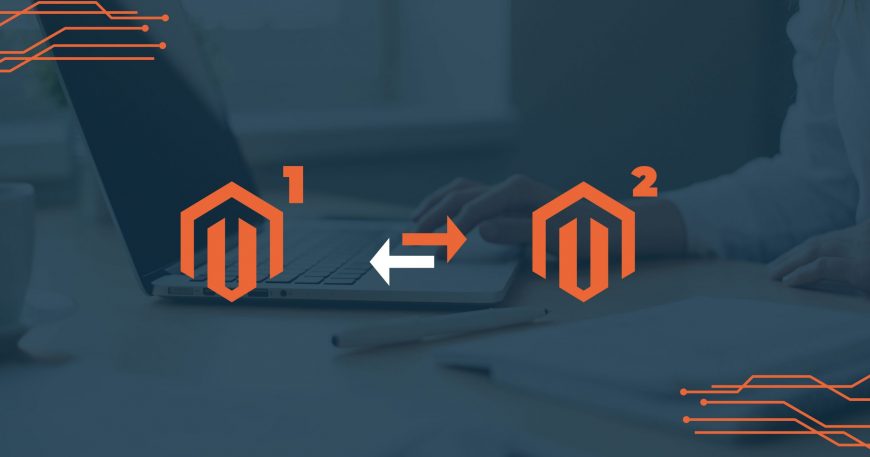Introduction to Magento 2 Migration
To effectively capitalize on the ever-evolving customer demands and drive growth, a seamless online shopping experience is essential. This is where Magento 2, the cutting-edge e-commerce platform, comes into play. Magento 2 is a powerful and feature-rich solution that offers unparalleled flexibility and scalability. Whether you’re a small business owner or an enterprise-level corporation, Magento Commerce provides you with the tools and resources needed to create a robust online presence. Magento 2 is available in two editions: Magento Commerce and Magento Open Source. With its extensive range of features, including advanced SEO capabilities and an intuitive admin interface, migrating to Magento 2 empowers businesses to elevate their online stores to new heights.
1. User Interface and Admin Panel Enhancements
The user interface and admin panel enhancements in Magento eCommerce bring a seamless and user-friendly experience to e-commerce businesses. With the latest version of Magento, businesses can take advantage of a wide range of Magento 2 extensions to customize their online stores and create visually stunning interfaces. The Magento CMS offers a powerful and intuitive content management system that allows businesses to easily update and manage their website content, product catalogs, and promotional campaigns. The enhanced admin panel provides comprehensive control over their online store, empowering them to efficiently manage orders, inventory, and customer data. The latest version of Magento incorporates responsive design elements, ensuring a consistent and optimized user experience across multiple devices. These enhancements make Magento Commerce an ideal choice for businesses looking to provide their customers with an engaging and intuitive online shopping experience while efficiently managing their operations through a powerful admin panel.
2. Performance and Scalability Improvements
When it comes to performance and scalability, Magento 2 outshines its predecessor, with a range of impressive features. Magento 2 introduces advanced caching techniques, an optimized database structure, and improved indexing capabilities, resulting in significantly faster page load times and enhanced overall performance. This performance boost ensures a seamless shopping experience, even during peak traffic periods, reducing bounce rates and improving customer satisfaction. Moreover, Magento 2 features a streamlined checkout process, minimizing cart abandonment and boosting conversion rates. The new version also boasts a more scalable architecture, allowing businesses to easily expand their online stores as their customer base grows, without compromising performance.
3. Changes in Architecture and Technology Stack
The new version of Magento introduces a modular architecture that enhances flexibility and extensibility. The technology stack has also been updated, with Magento 2 adopting PHP 7, which offers improved performance and security benefits. Magento 2 utilizes the latest versions of popular frameworks and libraries such as jQuery and RequireJS, ensuring better frontend performance and improved code organization. The introduction of a Service Contracts layer in Magento 2 promotes separation of concerns and facilitates easier customization and integration of third-party extensions. Migrating from Magento 1 to Magento 2 allows businesses to take full advantage of these architectural and technological improvements, ensuring their e-commerce platform remains up-to-date.
4. Improved Catalog Management and Product Attributes
Catalog management is a critical aspect of any e-commerce platform, and Magento 2 introduces several improvements in this area, making migration from Magento 1 to Magento 2 a crucial step for businesses. The new version of Magento offers more comprehensive product attribute management, enabling businesses to create and manage product attributes with greater ease and flexibility. Magento 2 also features an updated category page design, allowing businesses to create custom category pages with dynamic content and improved navigation. The platform introduces an improved product import/export functionality, simplifying the process of adding or updating products in bulk. With these enhancements, businesses can effectively manage their product catalog, ensuring accurate product information, improved searchability, and better user experience. By migrating from Magento 1 to Magento 2, businesses can leverage these improvements, empowering them to create more compelling product pages and offer a more comprehensive and user-friendly e-commerce experience for their customers.
5. Enhanced Checkout and Payment Options
The latest version of Magento, Magento 2, introduces enhanced checkout and payment options, providing businesses with a more streamlined and convenient e-commerce experience compared to the previous version. With Magento 2’s advanced checkout process, businesses can reduce cart abandonment and improve conversion rates. The platform also offers improved payment options, supporting multiple payment gateways and payment methods, including PayPal, credit/debit cards, and Apple Pay, to name a few. Additionally, Magento 2 introduces the ability to save and reuse credit cards, allowing customers to complete future purchases quickly and securely.The improved checkout and payment features in Magento 2 contribute to a seamless and secure transaction process, enhancing customer trust and satisfaction. By utilizing the latest Magento 2 features, businesses can optimize their checkout process and provide their customers with a smooth and hassle-free payment experience, resulting in increased sales and customer loyalty.
6. SEO Features in Magento 2
Magento 2 introduces a range of SEO and marketing features that make it a compelling choice for businesses looking to migrate from Magento 1 to Magento 2. The latest version of Magento offers enhanced search engine optimization (SEO) capabilities, including built-in support for search engine-friendly URLs, meta tags, and XML sitemaps, enabling businesses to optimize their online stores for better visibility in search engine results.
7. Marketing Features in Magento 2
Magento 2 also provides advanced marketing tools such as personalized recommendations, upsells, and cross-sells, allowing businesses to create targeted and compelling promotions to increase sales and customer engagement. The platform also offers integrated email marketing features, enabling businesses to easily create and manage email campaigns to reach their customers effectively. The ability to integrate with popular analytics and tracking platforms further enhances businesses’ ability to monitor and analyze their website’s performance. Migrating from Magento 1 to Magento 2 allows businesses to take advantage of these advanced SEO and marketing capabilities, ensuring their online store remains competitive and optimized for success.
8. Mobile-First Approach and Responsive Design
In the latest version of Magento, also known as Magento Commerce, a mobile-first approach and responsive design have been given paramount importance to meet the demands of today’s mobile-driven market. With the increasing use of mobile devices, it is important for businesses to provide an optimal user experience across all screen sizes. Magento 2 takes this into account by offering built-in responsive design capabilities that ensure seamless adaptability to different mobile devices. The latest version of Magento Commerce includes touch-friendly navigation, simplified checkout processes, and improved loading times for mobile users, resulting in an overall enhanced mobile shopping experience.
9. Extensions and Customization in Magento 2
Magento 2 provides a robust ecosystem of extensions and customization options, making it a preferred choice for businesses seeking to enhance their online stores. With Magento 2 extensions, businesses can expand the functionality of their e-commerce platform and tailor it to their specific needs. The marketplace offers a range of extensions developed by both Magento and third-party developers, covering various aspects such as payment gateways, shipping options, marketing tools, and more.
10. Data Migration and Compatibility Considerations
If you’re considering migrating your store from Magento 1 to Magento 2, data migration and compatibility are key considerations. Magento 2 data migration tools are designed to ensure smooth migration of data from your Magento 1 store to the latest Magento 2 version. It is necessary to carefully evaluate your current store data and customize the migration process accordingly. Compatibility with third-party extensions is also essential. Although Magento 2 comes with a large number of built-in features, it’s likely that you’ll want to use extensions to customize your store. Make sure you verify that your existing extensions and customizations are compatible with Magento 2, and if not, find appropriate replacements.
Let our Magento experts write your growth story. With the best in class Magento Website Development Services, Rolustech can help you build a Magento eCommerce store from the ground up, customize or integrate your current Magento website. Get in touch for a free consultation now.






